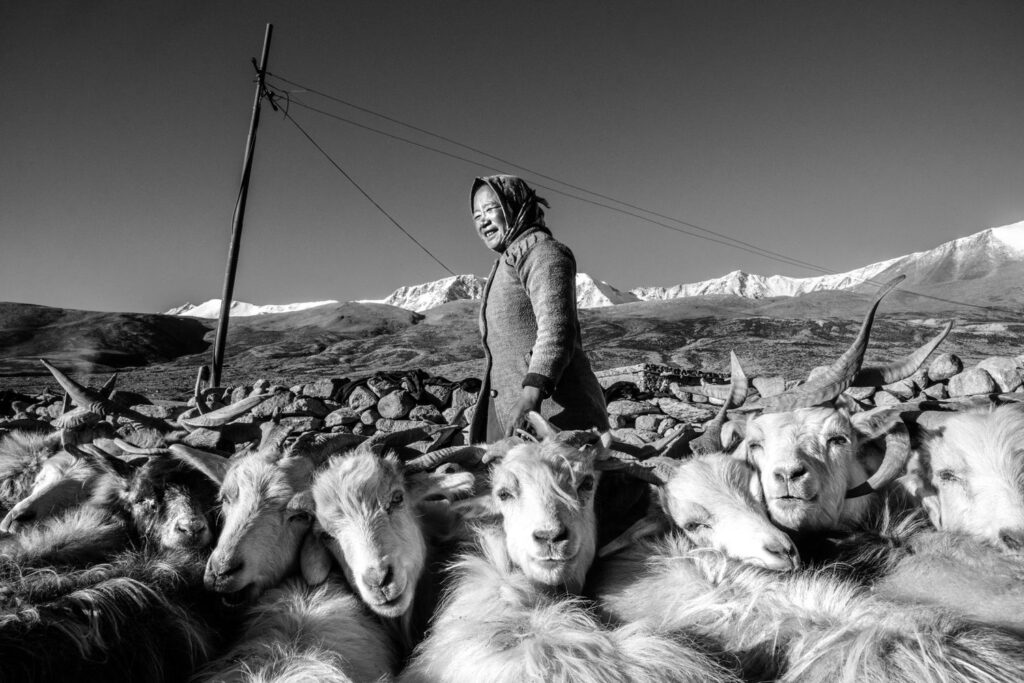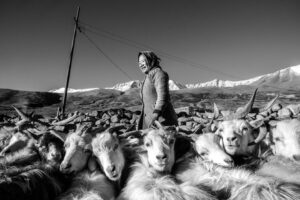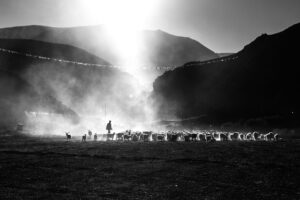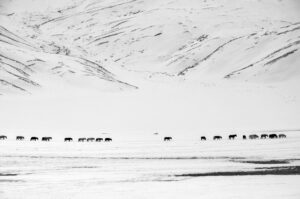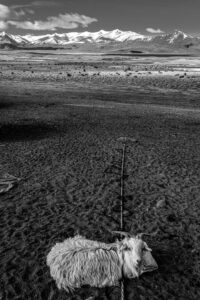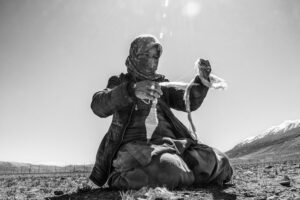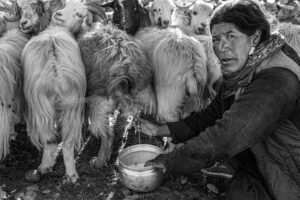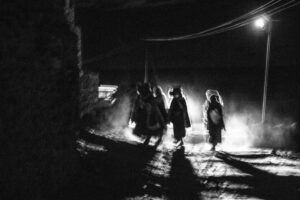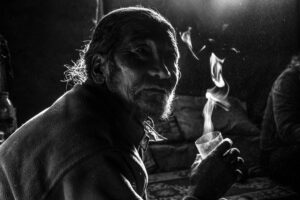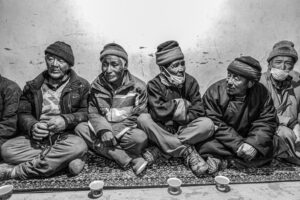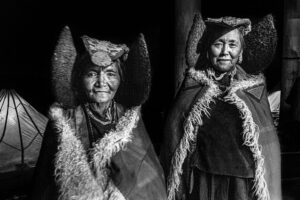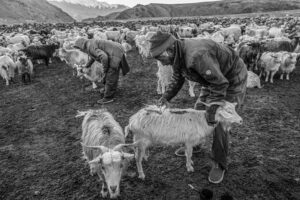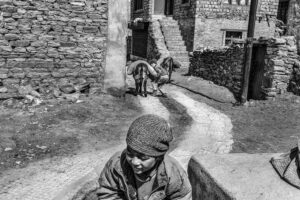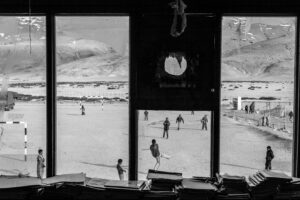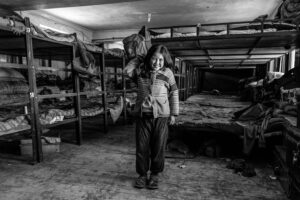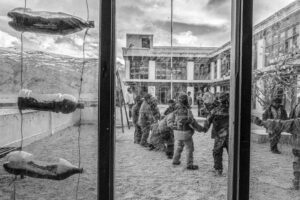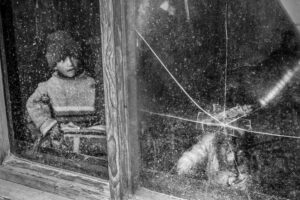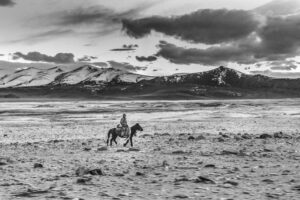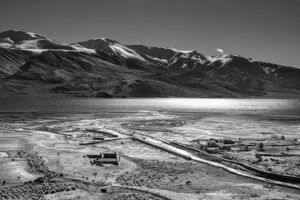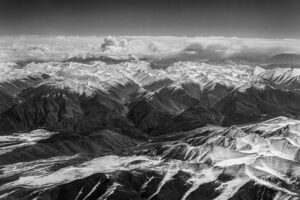“The Silent Disaster, photographed over five years, is one of those experiences where I feel responsible to use
my craft to share these multiple stories from the indigenous mountain communities. To help centre these regional narratives in the broader global climate narrative, and gain attention for this region to mitigate the compounding climate risks.”
The Silent Disaster is a visual project that canters upon the confluence of tribal identity, sustainable nomadic alpine livelihoods, and cultural and ecological impacts of climate change in the high-altitude Indian Himalayan community of Changpas. The Changpa people and their pashmina goats have, in a sense, co-evolved together in this harsh terrain, living in balance with each other and the land, while, climate change increasingly threatens their existence. For generations at an unsympathetic altitude of nearly 15,000ft., the Changpas have survived the unpredictable winds and heavy snow in the cold dessert.
Over the past decade, residents have witnessed dramatic and unexpected climate shifts. In 2013, a catastrophic event brought extreme snowfall and plummeting temperatures, cutting off all access to winter pastures. As a result, around 24,000 livestock perished from starvation, with 90% of the young either stillborn or dead.
For the Changpa people, this disaster deepened their sense of vulnerability to climate change and as climate-induced weather irregularities persist, they are increasingly forced to migrate. Rising temperatures, irregular rainfall and snowfall, and shifting seasonal patterns are all affecting the quality of pashmina fiber and regular wool, leading to a sharp rise in Changpa migration each year. Understanding the Changpa way of life and their traditional pastoral system is now more critical than ever, as it accounts for nearly 80% of the wool produced in the entire Jammu & Kashmir region, according to the Animal Husbandry Department of Ladakh.
Balancing a nomadic lifestyle with educational needs is a challenge for the Changpa community. The Residential Nomadic School in Puga village, Changthang, is the only school in the region providing both housing and education. While families hope their children will use their knowledge to sustain and reform their unique pastoral system, the school lacks resources to teach skills specific to pastoral livelihoods, instead focusing on modern professions. As a result, many parents are leaving their grazing lands and migrating to cities with their children, drawn toward a more settled, modern way of life.
Photographer Siddarth Behl shares, “Witnessing, interacting with and photographing various Changpa families and individuals facing issues regarding livestock, lifestyle, education in varying geographical landscapes in Ladakh, continues to evoke my dedication and interest in exposing the nuances of humanitarian crisis in this rough Himalayan terrain… constantly providing me with perspective, knowledge and acumen.”
Behl hopes for this work to be a portal for viewers across the world to become more cognisant of Changpa tribes who continue to protect ecosystems by maintaining a cultural practice tied to the land amidst ongoing environmental risks.
